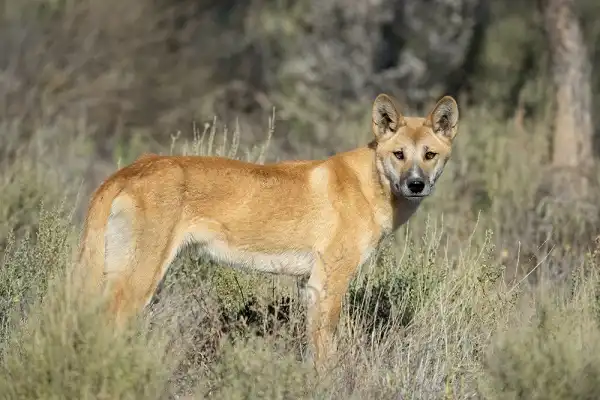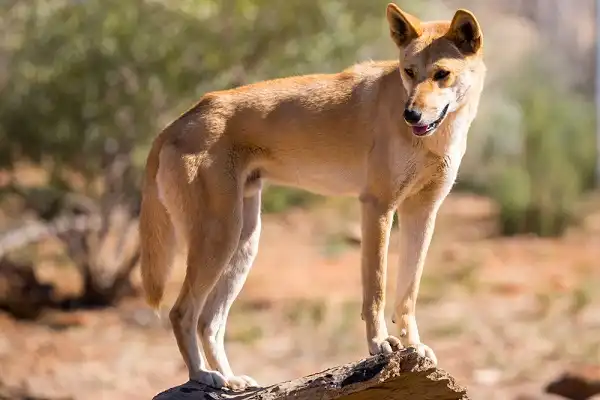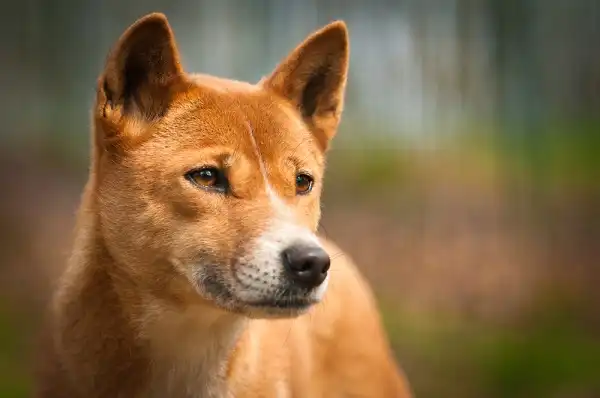Are you looking for a family-friendly pet that has a unique touch of wildness? Look no further than the dingo! This ancient Australian canine is renowned around the globe for its strength, intelligence, and striking good looks. Known for their curiosity and loyalty to their packmates, dingos are an ideal choice for those who want to inject a bit of wildness into their life. Whether you’re interested in adopting a pup or just learning more about these remarkable animals, keep reading to find out why dingos make such fantastic companions!

Dingo Description
The dingo is a medium-sized wild dog native to Australia, notable for its short coat of yellow or tan fur. They have a wedge-shaped head, pointed ears, and an almost wolf-like muzzle. The dingo’s tail is usually long and bushy, and it stands on average about two feet tall at the shoulder when fully grown. Dingos are highly intelligent animals and can be trained to perform a variety of tasks. Additionally, they are very social creatures that excel in activities like agility training, obedience training, and tracking. Dingos are also known for their ferocity and stubbornness; they are not afraid to stand their ground when threatened but typically prefer flight over fight if given the chance. This makes them well-suited for guarding livestock as they will generally bark at or chase away would-be intruders without harming them.
Dingo Habitat
Dingos can be found living wild in a variety of habitats across Australia, primarily open woodlands and savannas. They also inhabit the deserts of Central Australia as well as the tropical rainforests of Northern Queensland. Dingos are often found near human settlements and can even take up residency in urban areas in search of food. The dingo is incredibly adaptive and can survive in environments ranging from dry deserts to wet rainforests, making it one of the most versatile species on the planet. Dingos have an extensive social life; adults typically live in family groups consisting of a breeding pair and their offspring. These packs roam large territories and mark their boundaries with howls and scent markers. As a result, dingos often compete with other predators for territory or food sources – leading to occasional conflict between dingos and other species.
Dingo Diet
The dingo is a highly versatile and opportunistic predator, able to survive on a range of diets depending on its environment. In the wild, dingos are omnivorous scavengers with a varied diet that includes small mammals such as rabbits, rodents, birds, reptiles, fish, and insects. They will also feed on carrion (dead animals) and fruits in order to supplement their diet. Dingos have even been known to eat the occasional vegetable! In urban areas, dingos often rely on human food sources like discarded scraps and leftovers from restaurants or homes. This can lead to aggressive behavior if not properly managed.
For pet dingos, it is important to provide them with a balanced diet that contains all the necessary nutrients for healthy growth and development. Dog food formulated specifically for wild animals is often recommended by experts as it contains higher levels of fat and protein than traditional dog food. Additionally, raw meat (such as chicken necks) should be offered several times per week in order to satisfy their natural carnivorous instincts. Occasionally offering some fruits or vegetables can also help to balance out their diet while providing essential vitamins and minerals.

Dingo Size
The dingo is a medium-sized wild dog, typically measuring between 20 and 24 inches tall at the shoulder and weighing between 35 and 50 pounds. Males are usually larger than females, with males reaching up to 30 inches tall and 65 pounds in weight. Dingos have long legs that are well adapted for running and climbing, allowing them to easily traverse their rocky habitats in search of prey or escape predators. They have thick coats of fur which come in a range of colors including yellow, tan, black, white, and even red. The color of their coat often varies depending on where they live.
Dingo Lifespan
The typical lifespan of a dingo is between 8 and 10 years in the wild, though they can sometimes live up to 15 years when kept as a pet. In captivity, dingos generally have an easier life with fewer predators and access to regular meals, allowing them to reach their maximum potential age. Dingos have relatively good health and are not prone to many of the genetic diseases that can affect dogs. This is due to their long evolutionary history of surviving in harsh environments with few resources; dingos have had time to adapt and grow immune to many illnesses that would be fatal for other breeds. However, there are still steps that owners should take in order to ensure their dingo’s longevity. These include providing them with a healthy diet, regular exercise, and plenty of socialization both with their owner and other dogs. Additionally, regular check-ups at the vet are recommended in order to catch any underlying health issues before they become serious problems.
Dingo Behavior
Dingos are highly intelligent animals that demonstrate a complex range of behaviors in the wild. They possess impressive problem-solving abilities and can often find creative solutions to challenging situations. Dingos demonstrate a wide array of social behaviors, from playful interactions with other pack members to sophisticated vocal communication. They also communicate through scent marking and physical displays like head bobbing or tail wagging. Dingos are incredibly loyal to their family groups, and will often remain together for life. As a result, they form strong attachments to each other and show signs of mourning if one of their pack members passes away.
Dingos also exhibit cooperative behavior when hunting, working together in order to successfully capture prey that would be too large for any single animal to take down alone. In addition to their social skills, dingos also display dominance and territoriality when encountering unfamiliar individuals or packs, particularly during the mating season. This is often done through vocalizations such as growls or howls, as well as physical displays like standing tall or baring teeth. These displays are usually accompanied by scent marks which serve to warn off potential rivals while simultaneously reinforcing the dingo’s claim over its territory.

Dingo Speed
Dingos are known for their incredible speed and agility, making them wonderful animals to observe in the wild. They can reach top speeds of up to 50 kmph (31 mph) when running, allowing them to easily catch prey or evade danger. This impressive speed is due to their long legs combined with strong muscles that help propel them forward. In addition to running fast, dingos are also adept climbers and swimmers, with some dingos even being able to jump over 3 meters (10 feet)! This amazing athleticism allows them to traverse a variety of terrains while searching for food or shelter. Dingos have incredible stamina too, enabling them to travel long distances without tiring.
Dingo Hunting
Dingos are formidable hunters with a wide range of skills to help them capture prey. Their sharp senses of smell and sight make them well-equipped to detect animals from far away, while their long legs and powerful muscles allow them to run at top speeds and cover large distances in search of food. Additionally, dingos are proficient climbers that can scale trees and rocks, making it easier for them to ambush unsuspecting prey or escape from predators. When hunting, dingos will often work together as a pack in order to take down larger prey such as kangaroos or wallabies. One dingo will distract the animal while another sneaks up behind it and bites its hind legs, allowing the rest of the pack to move in and finish the job. They also have impressive stamina that allows them to pursue their quarry for long periods of time without tiring. This determination is what makes dingos one of the most successful apex predators in Australia.
Dingo Reproduction
Dingos reproduce seasonally, usually during the spring months when food is abundant and environmental conditions are ideal. During this time, males will often establish territories that they mark with urine or feces in order to attract a mate. Females generally give birth to litters of 4 to 6 pups after a gestation period of around 60 days. The pups are born blind and deaf but can walk within a few weeks and begin learning important survival skills such as hunting and socialization from their parents. Mothers are highly protective of their young and will fiercely defend the den if it is threatened. Males also play an important role in raising the pups by providing food for the family as well as teaching them how to hunt. As they grow older, young dingos learn vital behaviors that help them interact with other pack members and survive in the wild. They become independent at around 15-18 months old, at which point they may venture off on their own or stay with their original group.

Conclusion
Dingos are fascinating animals with complex behaviors and an impressive variety of talents. From their incredible speed to their cooperative hunting tactics, these apex predators embody many of the traits that make wild animals so captivating. As pets, dingos require dedication and patience; however, they can be highly rewarding companions for those willing to invest the time necessary to properly care for them. With a little bit of love and attention, dingos can be loyal friends that bring joy to any household! So if you’re looking for something special – consider adopting a dingo! Their impressive intelligence and unique personalities will surely make them an unforgettable addition to your family.
Frequently Asked Question


